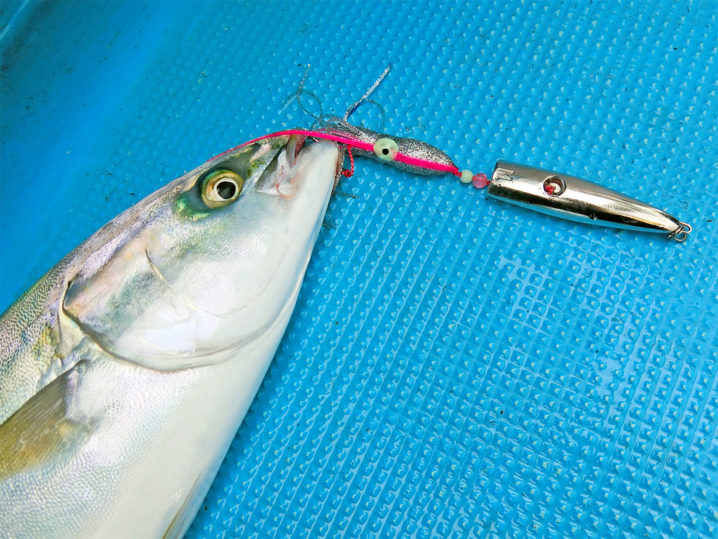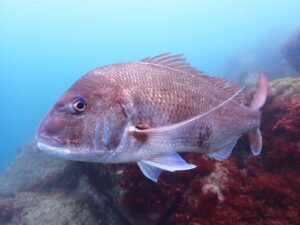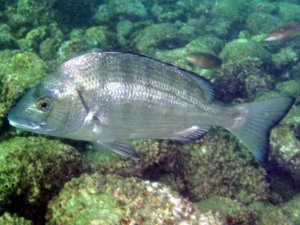Inchiku: How do you use it?
Inchiku is a very useful lure in offshore fishing. To retrieve steadily is the simplest way to explain how to use this Inchiku Jig.
In this article, I would like to explain how to use it in more detail, and the way to select the best weight or shape in certain situations.
For your interest, there is one article of mine about the history of Inchiku. If you are interested in its history, then please visit here.

The basic procedure
First, you hit the bottom with the Inchiku. Second, winding up the jig at a certain speed.
This is it.
It is so simple, to say it. But already some of you are imagining it should not be so simple.
If you retrieve the Inchiku at a certain speed, then how fast should you wind it up?
Good question! The answer is that the speed varies depending on the target fish.
If you go for Amberjack, then the retrieve speed can be very fast. Once in a while, you can make a short pause while winding. This makes the lure action like a metal jig. The lure moves blisteringly with a pause to flip. I imagine, for fish, this fast retrieved lure appears as a thin long fish, while the sinker and rubber octopus swims straight.
When you would like to catch Madai, then the slow and steady retrieve is the key. One reference of speed is one handle turn per one second (about 65 to 70 cm per second.) This recommended speed is the same for Tai Rubber. However, again, things are not so simple. If your boat is drifting with the wind, then this handle turn speed on the boat gives a different speed of the jig. I assume that Madai may be attracted by the trailer part of the jig, rubber octopus in Inchiku and neck-tie rubber in Tai Rubber. For this fish, the flattering movement looks attractive.
Therefore, the key is to let the octopus swim well, driven by the hull shape sinker, for Madai.
In the case that your target fish are bottom feeders, like Flatfish such as Olive Flounder (Bastard Halibut) and Groupers such as Hong Kong Grouper, or Seven Band Grouper, then the important thing is to search for fish near the bottom. It means that you start a steady retrieve immediately after it is touching on the bottom, you wind up 5 to 10 m, and you drop the Inchiku down to the bottom.
The reason why it is important is that especially grouper species often instinctively react to something dropping.

Selection of Inchiku
Since the retrieve for Inchiku is relatively simple, what makes the difference in result is the selection of Inchiku.
The core characteristics of Inchiku is this action.
The hull shaped sinker receives the current, while the line is pulling it in about 45 degrees from the direction of the flow. This balance makes the wobbling action to the sinker. And its octopus is swimming horizontally behind the sinker.
Understanding this action, you have to select the proper shape and sinker weight to achieve the ideal action.
First thing to consider is to take the sinker weight enough for you to realize that it hits the bottom. Some people say that the Inchiku weight can be calculated as ‘depth in meter’ + 50 g. It means that if you fish in 40 m depth, then your selection will be 90 g.
Of course, it is just a reference.
Other factors are the speed of sea current, the boat’s drifting speed, and the line thickness. Depending on the speed of current and drifting speed, the angle of the line is defined. With the angle of the line, the posture of the sinker is affected. Additionally, if your line is thicker and receives bigger water resistance, then the line in the water shapes like an arch. If the resistance on the line is bigger, then the lure is pulled more to the slant angled direction (closer to horizontal angle.)
Shapes of Inchiku
Many Japanese lure brands are selling Inchiku Jigs. Each of them has a different shape and naturally the action is different.
The important point in selecting one is to imagine the ideal action, described above. General guideline is this. If the sinker’s hull shape is wider, then it is easy to wobble or it moves in weaker sea current. If it has a thinner width section in a sinker, its wobbling action tends to be in higher pitch, and stable in faster moving water. And when the center of gravity is in lower part of the sinker (further from the line), then it also becomes more stable.


And if you pay attention to the flashing effect, it is better with the flat surface.

It has a big flat surface with a hologram pattern, intending to make a flashing effect.
As you may know it, now, this Inchiku is a versatile player in offshore fishing. It is worth keeping in your tackle box with your offshore metal jigs.

